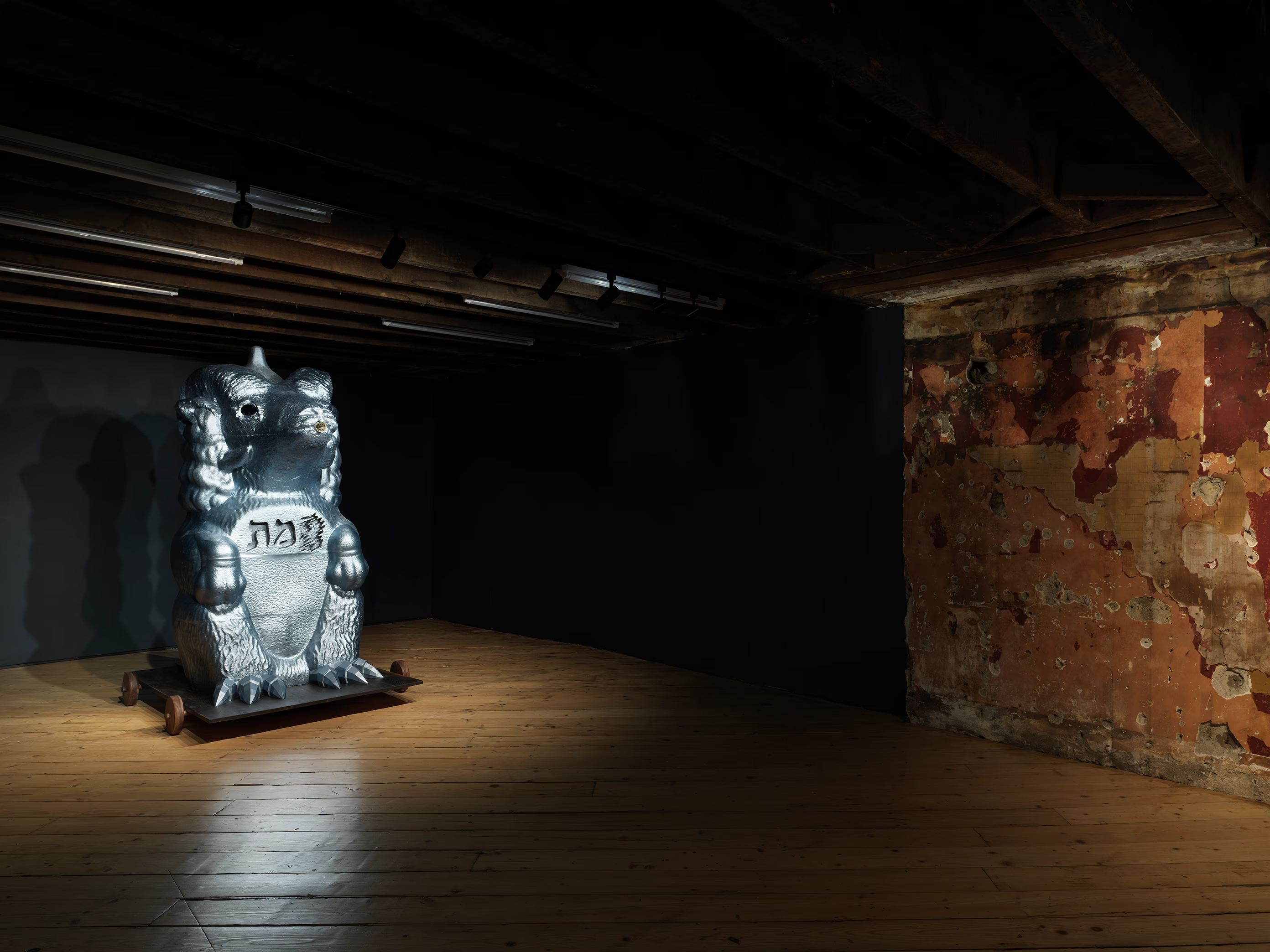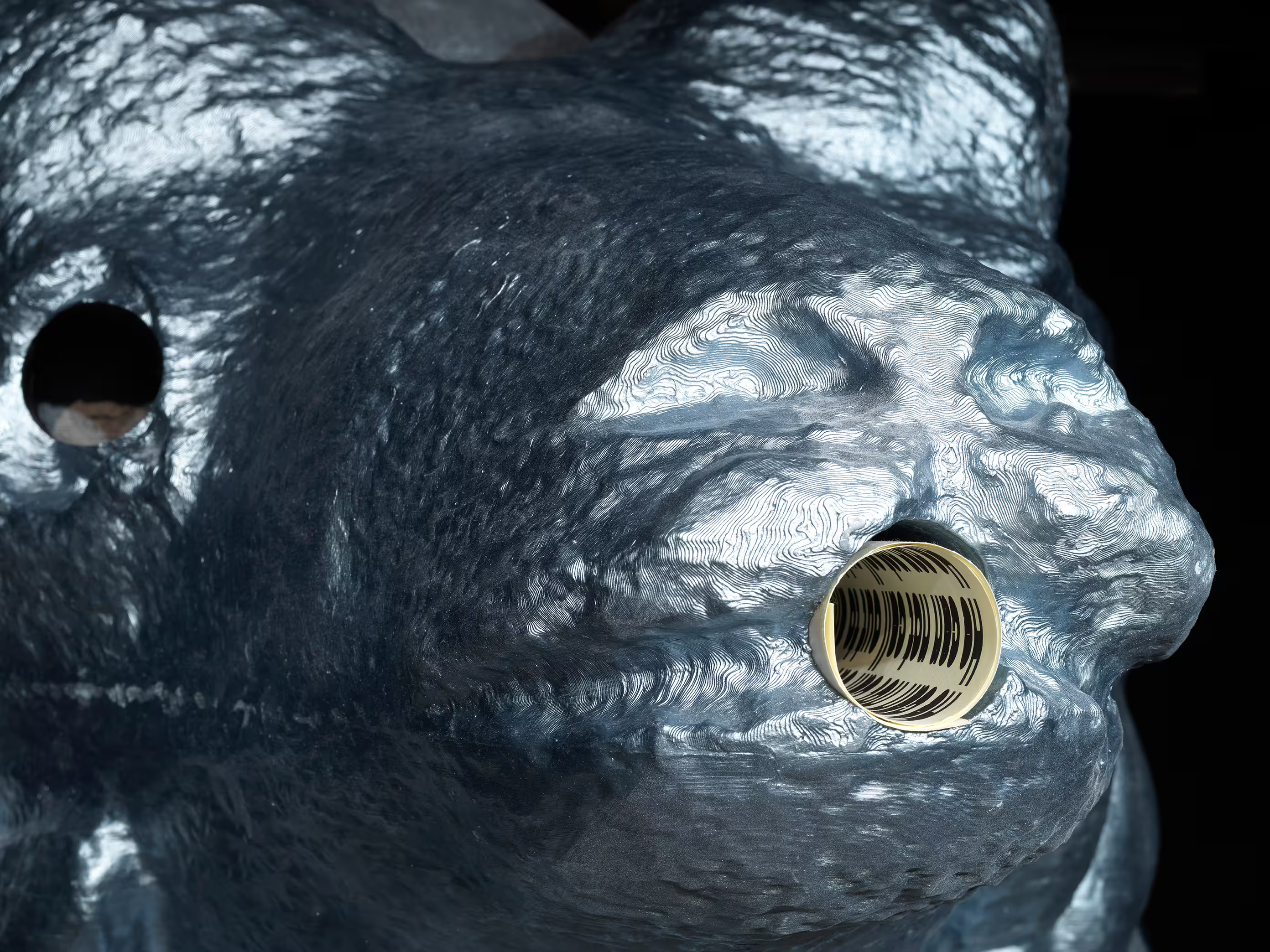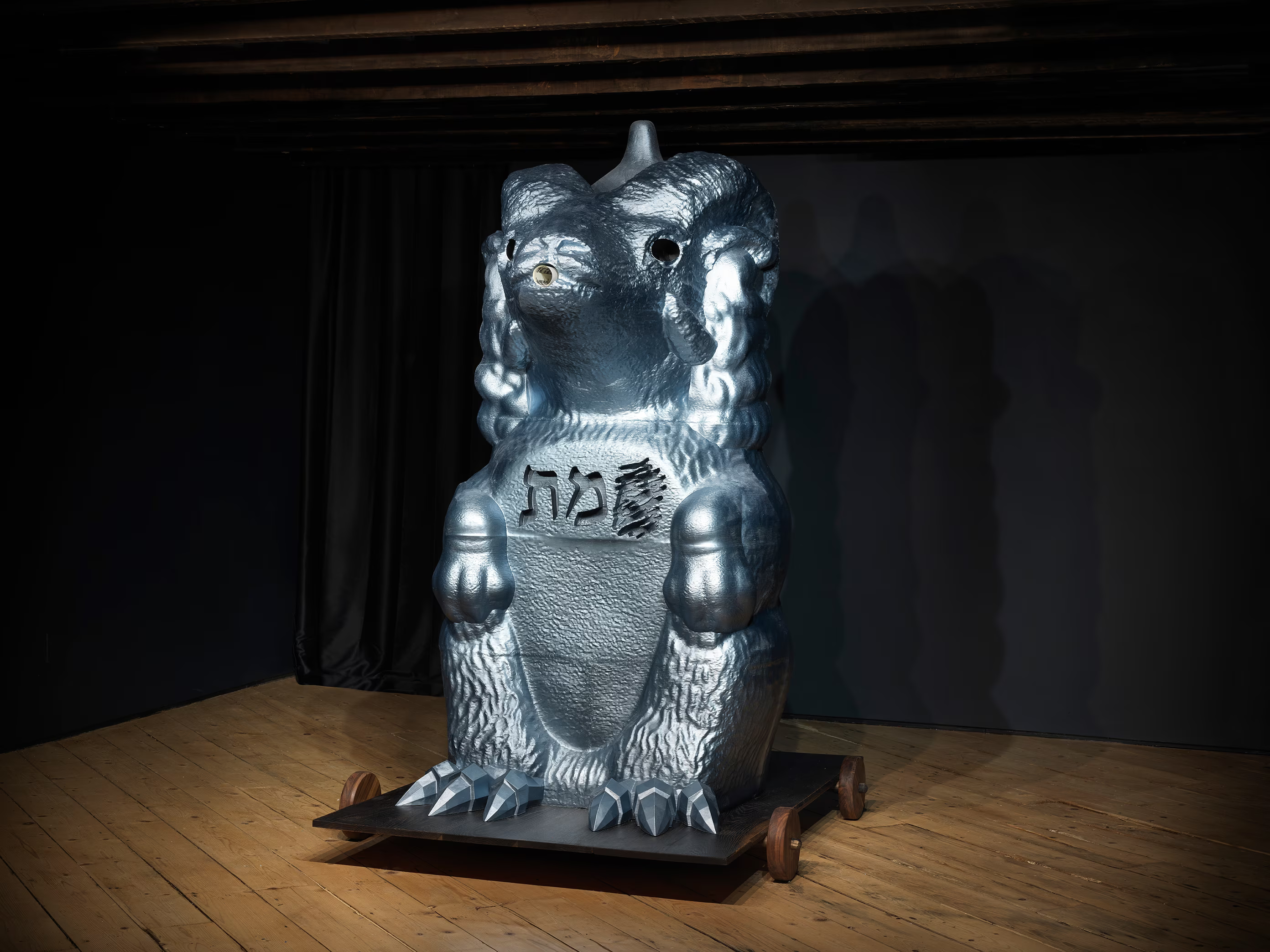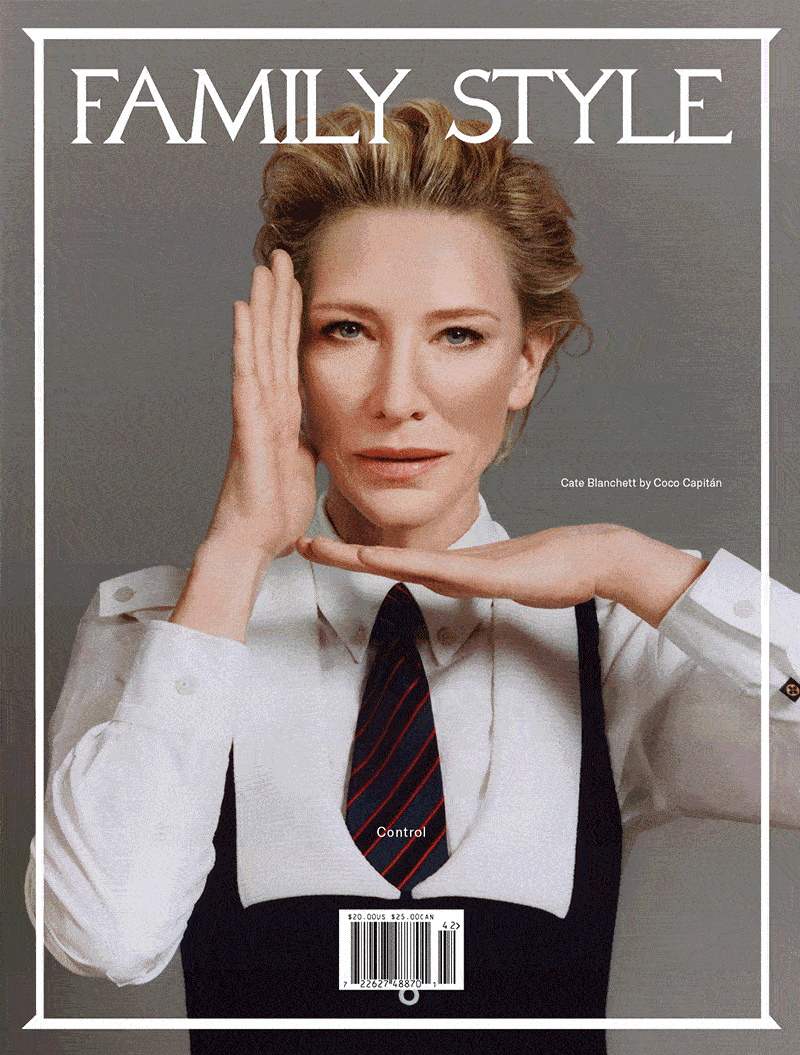
Installation view of “Genevieve Goffman: All the words that came down to meet the body that came up from the ground.” Image courtesy of artist and Foreign & Domestic. Photography by Dario Lasagni.
A strange creature is hiding out on the Lower East Side. It is imposing, radiant with silver skin, somewhere between a bear, ram, and perhaps a dog. The golem, as it’s known in Jewish folklore, can’t speak for itself, but others have told and retold its story for centuries. The latest to do so is Genevieve Goffman in her show “All the words that came down to meet the body that came up from the ground” co-presented with Alyssa Davis Gallery at Foreign & Domestic in New York.
The golem’s menacing appearance belies its true nature: As described in 3rd-century Jewish texts, rabbis would conjure golems with language after shaping them out of clay as part of a spiritual and private exercise in faith. But by the mid-19th century, the golem was expressly cast in the role of guardian or protector; in this, it tended to behave in more violent ways, more akin to a Frankenstein-type monster. Blind loyalty to its maker combined with a newborn-like understanding of its surroundings often led to chaos—asked to fetch fish from a river or water from a well, it came back with such large quantities as to be more trouble than help. “Even though once it was this beautiful folk tale, it’s become a metaphor for terror and obsessive need for protection,” adds the artist. “There’s this tragedy for the golem, where even though it’s supposed to be this symbol for power and faith, it’s become a symbol of fear and terror.”

Genevieve Goffman, The body that came up from the ground, 2025. Image courtesy of artist and Foreign & Domestic. Photography by Dario Lasagni.
In classic tellings, the golem is awakened with a scroll placed in its mouth. One in the mouth of Goffman's golem further acknowledges its own muteness with text reading: “He cannot call out to anyone with his mouth stuffed full of paper.” Nodding to other aspects of its legend, the word emet —meaning “truth”—is etched on its chest, but the Hebrew letter of aleph has been scratched out, changing the meaning of the word to “dead.” Seared into its skin, the brand reiterates its inanimate state, or rather one of suspended animation at this moment in its ever-evolving history.
An original poetry book on view taps into this flux state. Goffman rendered the volume with transparent plastic pages stamped with phrases meant to evoke the layers of the stories—sometimes overlapping, sometimes conflicting—that have manifested the golem as we might now understand it, with all its paradoxes and peculiarities. “It goes back to this idea that the golem is a creature made of text and language,” says Goffman. “I felt that the pages needed to be clear to convey this idea of text being built up over time, but also the silence of the golem..” Flipping through, phrases like “I am no angel of mercy” and “From earth the golem comes” float in and out of legibility, obscured by each other. The object also drives home Goffman’s fundamental artistic impulse as a storyteller through objects, informed by our cultural past and the fantastical allegories that emerge around it.

Genevieve Goffman, All the words that came down, 2025. Image courtesy of artist and Foreign & Domestic. Photography by Dario Lasagni.
As far as her personal associations, Goffman sees in the golem’s existence—its perceived purpose inherently skewed by subjectivities of narrator and readers alike—parallels in how we create cages around ourselves with past wounds. “[Traumas] define our identity in a sense. And then identity itself is built into this idolizing thing that we hold to be sacred even over our connection to other people,” she reflects.
An antidote to this heaviness can come in the form of community. To wit, collaboration between the two galleries in the technically involved, two-year production of the massive golem sculpture was crucial in bringing it to fruition, Goffman emphasizes. And the installation came to life this week with an after-hours concert in the space featuring sets by musicians James Ferraro, Pure Immanence, and Plebeian (Andrew Nerviano).

Genevieve Goffman, The body that came up from the ground, 2025. Image courtesy of artist and Foreign & Domestic. Photography by Dario Lasagni.
Still, the golem is eternally fated to be a silent listener in whatever community it finds itself, unable to contest negative misperceptions of its fundamental raison d'être—a poignant destiny to contemplate. “If the golem cannot speak, and doesn’t have an actual soul, does it have emotions?” asks Goffman. In considering this, “maybe the tragedy that we’re feeling is inside of ourselves.”
“Genevieve Goffman: All The Words That Came Down To Meet The Body That Came Up From The Ground” is on view until May 18, 2025 at Foreign & Domestic at 24 Rutgers Street, New York, New York, 10002.














